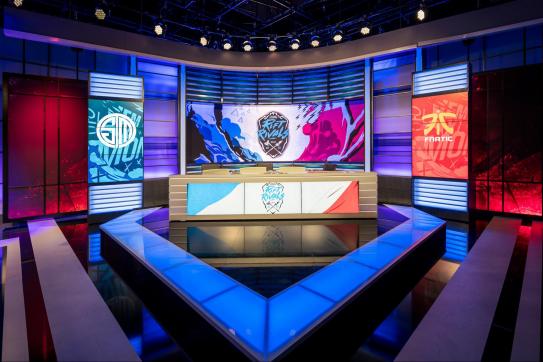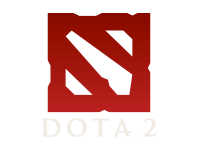There is a lot of talk going around the community about the future of NA and Worlds hasn’t even started. Many are excited, others are fearful, but no matter what this is going to be the largest change to competitive League since commenced with LCS in season 3 with the introduction of the NA LCS Franchising. While EU might have a lot of problems that nobody’s quite sure how to deal with, NA has grown to the clear juggernaut for popularity among fans. Not to say that the region is the strongest in terms of skill, but fans hold nothing back when it comes to expressing their admiration.
There are a list of things that people have been speculating with what they see in the near future to be released as to signs of life from NA since franchising starts this coming year. While it is not yet possible to prove or disprove some, it is worth talking about them for clarity. This means having both sides of an argument and letting you, the fans, decide what you think based on that and possibly have your voice heard if it weren’t before.

Photo Credits: https://www.flickr.com/photos/lolesports/
With the NA LCS Franchising some EU Teams are to Migrate to the NA LCS
Let’s start off with a big one that many have thought for some time. The top teams were rumoured to be looking to leave EU LCS since franchising is a lot more promising. Even if they were just rumours, this got a lot of people talking. Adding in the release of H2K’s statement about leaving LCS if revenue sharing doesn’t come in is something that has given a lot more credibility to teams looking for an escape to a situation they deem dire in EU. Not that I can say that EU is going well, but there is a lack of desirability from the EU LCS at the current moment.
For a team to leave a region that is exhausting the owners in terms of waiting, leaving for NA can be extremely beneficial. Some of the teams in EU have a lot of sponsorship from NA anyways, so it wouldn’t be that far of a stretch for them to decide that they want to take their enterprise to their own backyards. It would be easier for these teams than brand new organisations for Riot since they already have a good name recognition, which would make the competitive spirit thrive among fans.
The problem with this would mean that Riot would have to allow EU to drown. It can be argued that what Riot is currently doing isn’t too grand, it is still an effort to keep it afloat with a long term goal in mind. Allowing teams to leave for other shores would be Riot admitting that they are giving up. Alongside that notion, the teams migrating would be abandoning a lot of supporters from Europe in favor of money. I couldn’t imagine that going over well with many fans, even the die-hard ones.

Photo Credits: https://www.flickr.com/photos/lolesports/
Expanding the NA LCS Team Limit to 12
With the cancellation of the Challenger Scene, many fear for the future of new organisations, rookies, and fresh talent. There are arguments all over the place calling for a better collegiate system, a minor league, more independent tournaments, you name it. However, the one that comes up the most frequently is to increase the amount of teams from 10 to 12 similar to how the LPL has it set up. This is even where we saw one of the few instances of groups actually working well.
As stated, this can have the potential to bring in a lot of newer talent and more investors, but that doesn’t equate to a better league. Critics of NA have stated for years that there isn’t much home grown talent in this hemisphere, so wouldn’t adding more teams just be adding more players that aren’t that great? Along with that, there really aren’t too many organisations with that much money or that large of a following to demand the increase yet anyways. Outside of possibly NRG and eUnited, what teams can afford the price tag and have ways to garner fans with a line up of rookies and imported pros?
Looking short term, adding more teams might not be the best idea. But long term has to be the name of the game. With an organisation that joining early, they have a better ability to gain more followers and supporters quickly to try to keep up with the levels Cloud9, TSM, and CLG already have. This is also great for those new players looking to make a name for themselves. Maybe they aren’t the best now, but becoming the best isn’t inherent, people need to work hard to make a name for themselves and allowing for more opportunity should be the way.

Photo Credits: https://www.flickr.com/photos/lolesports/
Ownership of a Location
Personally, I feel this is a topic that is talked a lot by those that watch other esports but not a lot by those that primarily focus on League of Legends. Overwatch started up the OWL not too long ago and seems to be miles ahead of LCS in many terms: Sponsors, Brand Name Owners, and Investors. Immortals Owner, Noah Winston, has already locked into a contract for Los Angeles alongside Rams and Nuggets owners’ Stan and Josh Kroenke. Misfits own Miami. Cloud9 have claims on London. Andy Miller, Sacramento Kings owner and NRG co-owner, took the spot for San Francisco. Not just small owners getting in on the action, this is some considerable money.
But the thing is, you wouldn’t know any of this if you didn’t read about it or looked it up on your own. This is information that is public, but in a few months, they won’t be calling it the London Cloud9. It will have a different title along the lines of London Thunder or Monks or Gazorpazorps. Little indication will remain of who the owners are without prior knowledge. For owners of other franchises in other leagues, that makes a lot of sense, but esports has been a lot different. Fans cling to the name of the organisation and have for a long time. Team SoloMid is one of the most recognisable names in all of esports and it would suddenly disappear with team locations and team mascots.
This topic has so many good points to adding it at the same time equal number of downfalls. What would LCS be without TSM? Without Dignitas? Liquid? CLG? Or the miracle team C9? A lot of history is already tied with the organisations. OW hasn’t had that same type of history. And with the amount of history, comes brand recognition and money for those teams. But at the same time, how are new teams supposed to compete? They will always be second fiddle to TSM or even third to C9 despite if they are good or not. Think back to LMQ and the struggles the owners had just to stay afloat because so few people would support them even with them making it to Worlds.

Photo Credits: https://www.flickr.com/photos/lolesports/
Academy Leagues or Collegiate System?
When franchising was announced, so was a system to replace the fledgling Challenger Series. As in the past many teams had had academy rosters to test and vet new talent, the challenger scene would help foster them. But due to changes to Riot’s rules, it was a less lucrative attempting to create these teams. However, there is no system to move up to LCS now. There isn’t anything that can impact a team when it comes to not having more players attached to their logo.
But a better academy system has to compete on stage with that of a collegiate one. In many other sports, players tend to be drafted after college in order to make their claim on the big stage. Competitive video games don’t have the same sort of rules though. Players tend to enter at extremely young ages if they seem to be talented enough. MikeYeung was only 17, Rekkles had started at 16, and the Gamania Bears weren’t able to play long ago due to age restrictions.
In a perfect world, both systems could coexist. Possibly might even see that in the next 5 years being the case, but at this time it is clear only one will be heavily monitor for success by Riot, so which should it be?
An academy league would allow for teams to practice more with their rookies and newer players in the same competitive environment as their starting roster. They could even be swapped in if they feel one of the starters isn’t playing to the level they should. Along with this, teams would be able to showcase these rookies so people could start to get attached to the name earlier in their career.
As for collegiate leagues, these players can continue to spend time in school to keep a career opportunity open in case they fail to meet the requirements of a professional player. This is a sad, yet true thing that happens as not everyone has the mentality to be a pro. As well, this can let them try to prove to the entire region that they have the ability to balance the pressures of a team along that of a full school schedule.














